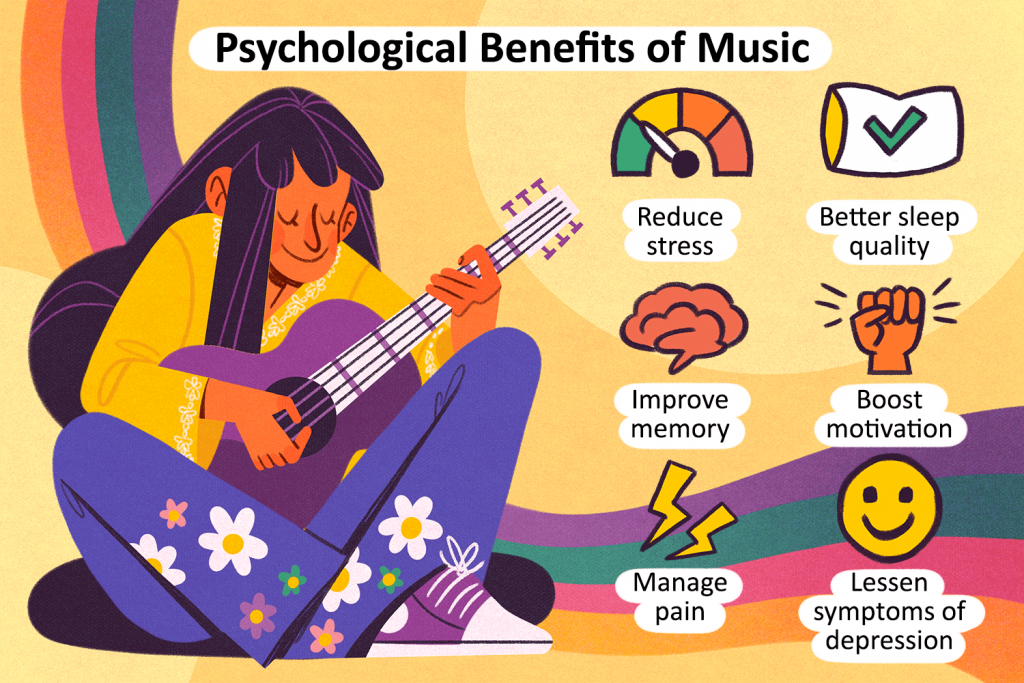I. Introduction
In today’s fast-moving business environment, employers and employees alike must always stay one step ahead, seeking innovative ways to boost drive and productivity. This innovation includes the strategic use of soundscapes—carefully crafted audio environments designed to shape the mood and mindset of listeners. A soundscape encompasses the surrounding acoustic environment, consisting of both natural and artificial sounds, and can be manipulated to create a specific atmosphere.
A. Creating Productive Workplace Soundscapes
In the workplace, soundscapes are crafted with intent to foster an environment suitable for focus, creativity, and relaxation. Adding key audio elements—like ambient music, nature sounds, or curated musical compositions—transforms an ordinary workspace into a dynamic setting that supports well-being and productivity. This tailored approach to sound can make a substantial difference in how employees experience their workspace, ultimately impacting their engagement and output.
B. The Motivational Power of Music
Motivation is one of the most important factors affecting employees’ performance and satisfaction. It determines their attitude toward work, their relations with colleagues, and their contribution to reaching the organization’s goals. A high level of motivation is likely to increase productivity and reduce turnover, with heightened creativity. Music has indeed proved to be an effective way to tap into those emotional and psychological triggers that will inspire and motivate. It lifts the mood, relaxes tension, and forms bonds among group members.
Studies have confirmed that music enhances focus, adds stamina for boring activities, and enhances innovative thinking. For example, a Beatport promotion could provide new music and playlists that will make the music new and exciting to hear, which caters to many varied tastes and preferences in music. Thoughtfully applied, music to the workplace may transform the static to a dynamic environment, acting as one of the key catalysts towards increased individual and team productivity.
By curating an ideal audio environment, businesses can leverage these benefits to cultivate a more energized and engaged workforce.
II. The Psychic Effects of Music
Music has long been tied to the human mind as a set of psychological returns that could be harnessed to boost motivation at work. Probably the most significant psychological benefits of music are ways in which it could influence mood and emotion. A catchy tune can trigger anything from euphoric and excited feelings to calm and reflective ones. A carefully crafted sound profile in the workplace would make sure that employee morale is upbeat and conducive to work.

source: verywellmind
- Cheerful rhythmical tunes can increase workers’ energy by infusing excitement in their work.
- Soffer melodic pieces can be calming; resulting in a serene environment, reducing irritability and impatience.
A. How Music Helps Reduce Stress and Increases Cognitive Abilities
High-pressure working environments drive stress and anxiety, influencing employees’ efficiencies and mental clarity. In this regard, music tailored for stress relief may help; it has been shown to lower cortisol levels and heart rate by creating a more relaxed environment in the workplace.
- Classical music, ambient sounds, or nature can provide the background and keep the mood relaxed for employees during most intense periods.
- Some of these instrumental tracks produce a consistent rhythm that blocks out distractions, creating a “flow” state.
More importantly, though, cognitive benefits from music extend beyond mere stress relief; the research evidence indicates that certain types of music actually enhance memory, problem-solving skills, and acuteness of the mind. This makes music an invaluable tool in fostering concentration and creativity, hence leading to greater productivity and efficiency that benefits the organization.
III. Soundscaping at Work
Creating the right soundscape in the workplace is essential for boosting productivity and ensuring a pleasant working environment. The type of work and employee preferences should be carefully considered when selecting music for the office. Tailoring the audio environment can enhance focus, relaxation, and energy depending on the task at hand.
- Instrumental Music: Classic, jazz, or ambient electronic music can provide a calming background without the distraction of lyrics, promoting focus.
- Lo-fi Hip-Hop or Soft Acoustic Tunes: These genres are perfect for creating a relaxed atmosphere that supports concentration and productivity.
- Uptempo Music: Rhythmic music works well for high-energy tasks, such as brainstorming or motivating employees during workouts.
- Employee Input: Conduct surveys to determine employees’ music preferences and the tasks they perform to ensure the soundscape aligns with their needs.
- Flexible Sound Systems: Use different playlists for different departments or areas of the office to cater to specific needs.
- Natural Sounds: Integrating sounds like waves or birds chirping can create a soothing atmosphere, reducing stress and boosting focus.
- Volume Control: Ensure that music is audible but not overwhelming, allowing for a balanced auditory environment.
In summary, designing an effective soundscape involves understanding the tasks at hand, employee preferences, and managing the audio environment thoughtfully. Regularly updating the playlists, offering personal listening options, and using good-quality audio equipment can ensure a harmonious work atmosphere conducive to productivity.

IV. Case Studies and Real-World Applications
Many companies have successfully implemented soundscapes into their work environments, and indeed, the results in motivation and productivity have been very positive. The following case studies show how different organizations took advantage of soundscapes to develop a positive and focused environment for better well-being among employees.
A. Ambient Soundscapes Minimize Distractions
Ambient soundscapes, such as those of nature and soft instrumental music, have been integrated into large technology companies to minimize distractions in their open-plan offices. By creating playlists designed to calm employees to a state of higher focus, they recorded a 25% increase in levels of concentration among staff, while significant numbers of stress-related complaints lowered. This use case highlights how a subtle audio atmosphere can be utilized to overcome some of the drawbacks in open-office designs.
B. Boosting Productivity and Accuracy for Repetitive Tasks
Productivity benefits from music are well supported by research, particularly for repetitive tasks. For example, a study at the University of Illinois had participants work with background music on repetitive tasks and then work in silence. The researchers reported that the participants who worked with background music completed the tasks more quickly and produced higher-quality work compared to individuals who worked in silence.
A financial organization decided to play classical music during busy periods of the day and as a result, employees expressed increased mood, and perceived less pressure on workload, resulting in a harmonious and more cooperative team atmosphere.
C. Custom Soundscapes to Augment Creativity and Wellbeing
Organizations are also investigating personalized soundscapes to foster creativity and employee well-being. An engaging, inclusive sound environment came about when a design firm asked team members to contribute to the favorite music genres, making the workplace uniquely tailored to the tastes of its staff. Another example might be that a health care provider instituted soundscapes and meditation as part of their wellness programs to reduce burnout for medical professionals; this, in turn, improved patient care because the staff was better focused and in an improved state of well-being.
These case studies illustrate the many ways in which soundscapes have been used to great effect in the workplace, from improving productivity and concentration to enhancing morale. Music can be intelligently applied toward helping organizations forge closer, more productive teams by reinforcing supportive environments that nurture futures of growth and innovation.
V. Conclusion
In this article, we look at how music can play an important role in motivation and productivity within a workplace. We started off by defining what soundscapes were and how motivation plays an essential role in any productive work environment. We discussed how music can influence mood, decrease stress, and enhance cognitive performance, and thus is a potentially powerful motivator for workers. We also touched on some ways to effectively use soundscaping in a workplace setting, along with some guidelines about the most effective types of music. We also looked at a few potential pitfalls that one might encounter, and remedies for each of these. We were able to reflect on specific case studies and research findings that enable the presentation of concrete benefits the soundscapes could bring into a corporate environment.
Actually, soundscapes are quite a powerful option to enhance motivation in the workplace but are not utilized very often. By incorporating music more thoughtfully into the daily routine, an organization will create an environment that is much more vibrational and interactive, best for unleashing creativity, easing tension, and driving productivity. Going forward, employers should look at the potential benefits of soundscapes and take their rightful place in designing a motivated and high-achieving workforce. This will eventually build up a better harmony between work and music, leading to a career that is much more enriching and successful.


